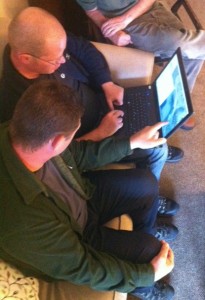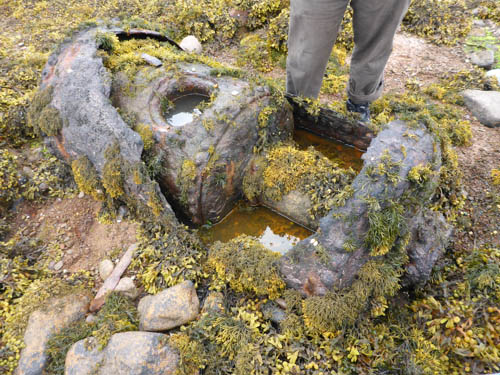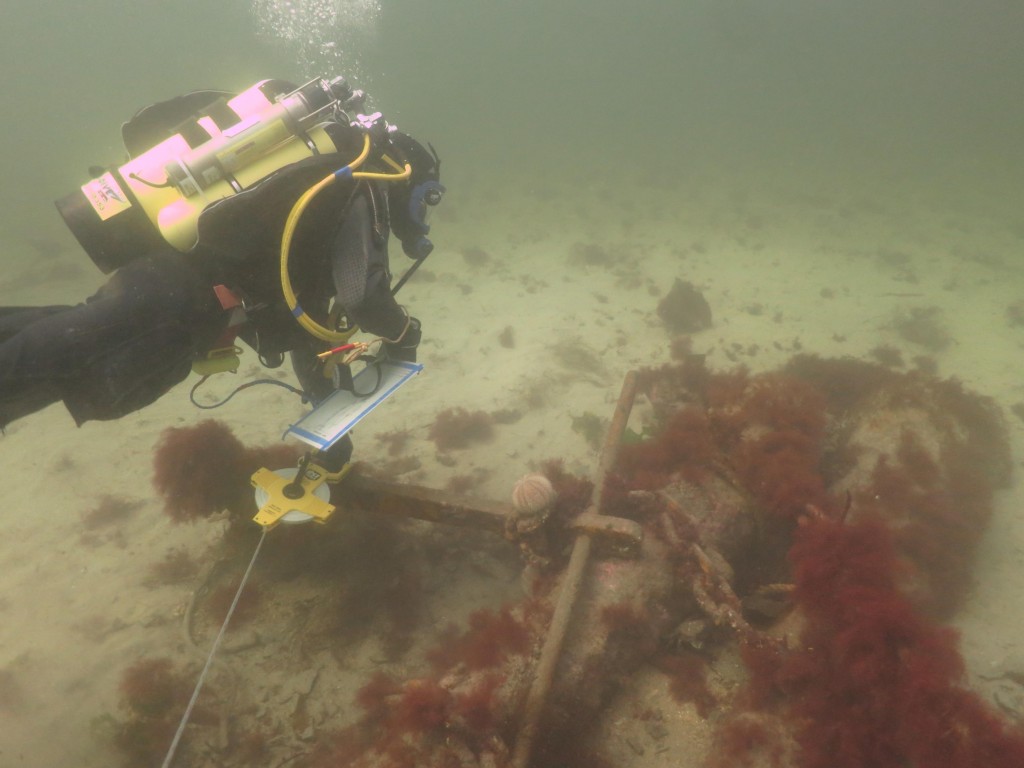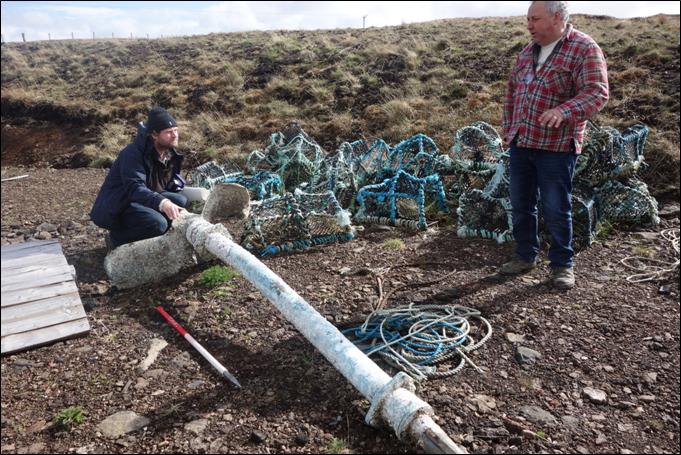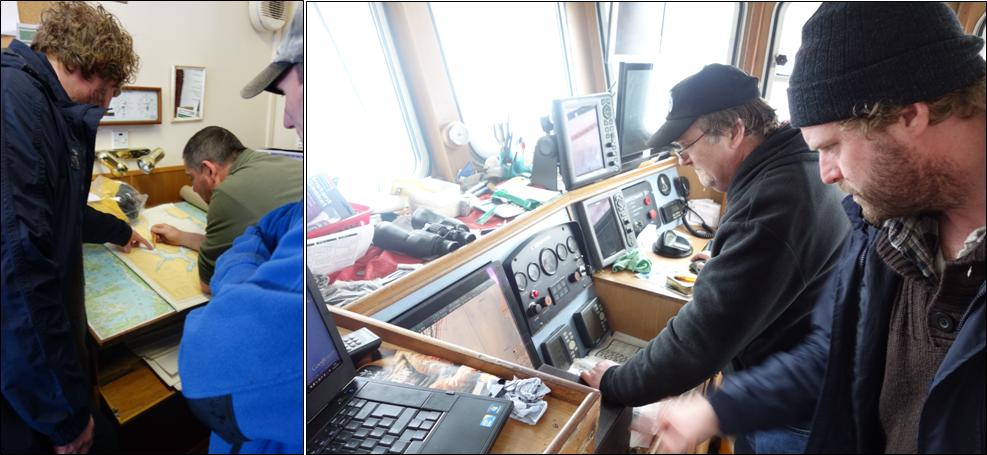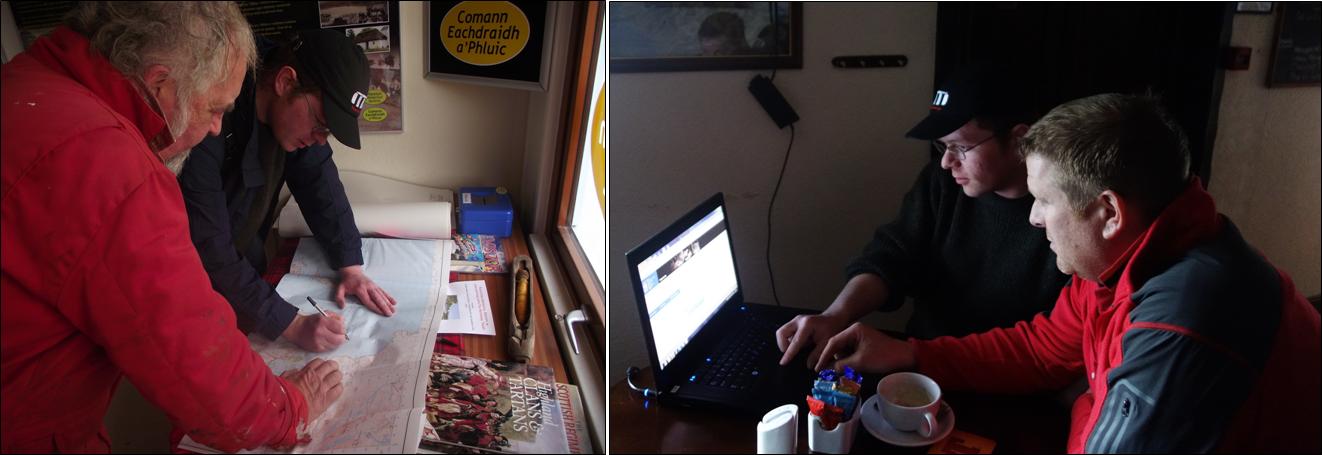We arrived in Torridon on the 11th of May and immediately began chatting with the local community about marine archaeology. We met some interesting local people with lots of useful contacts at Torridon and were given some contacts for local scallop divers. After leaving some promotional material for the project we moved on to Shieldaig.
At Sheldaig we followed up on some previously unrecorded sites reported to us ahead of the field trip, visiting a couple of locals in their homes to chat about the project and the sites they had discovered. We followed up with a visit to the local hotel where we met and chatted with several fishermen. Shieldaig is off-limits to trawling so all the local fishermen use creels, primarily for prawn.
Following up on a lead from Gairloch we contacted some of the local boat operators who pointed us to a large cannon lying on the main street of Shieldaig. The next morning we bumped into a local man Robert Gordon, a former fisherman and local historian. He filled in the story of the cannon which was in use at nearby Ardheslaig as an anchor for many years. Robert gave us a video interview and told us that it has only been in its current location for the last five years. A quick search of CANMORE seems to suggest that this important artefact has never been recorded before. The SAMPHIRE team made a complete record of the dimensions of the cannon and hope to identify its nation of origin and age once we get back to Edinburgh.

Recording cannons around Shieldaig.
Chatting to another local, Andrew Patrick, whom we worked with last year in Torridon we were informed that there was a second unrecorded cannon in Shieldaig! Investigating further we found that a neighbour of Andrew’s has a small cannon in his garden and that it was recovered during dredging of the Congo river in Kinshasa before ending up in Shieldaig. Although this cannon is not of local origin we recorded its dimensions and hope to come back with a more detailed origin for it too.
Next stop Applecross!

